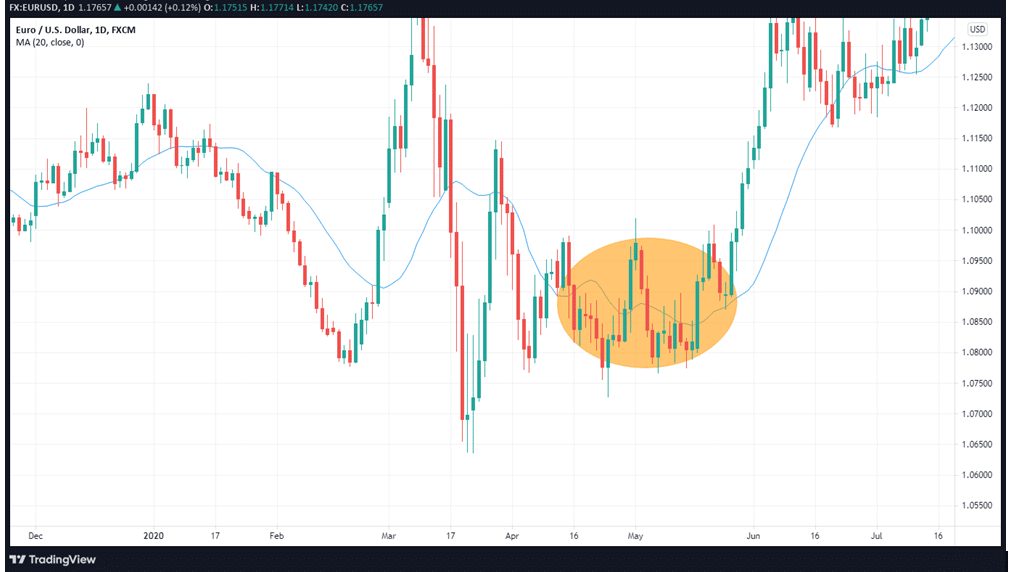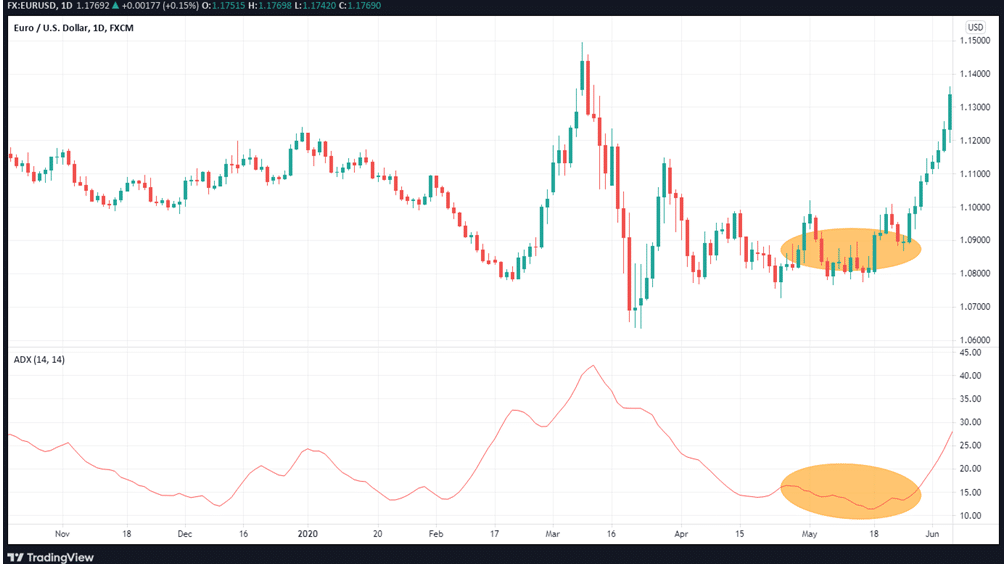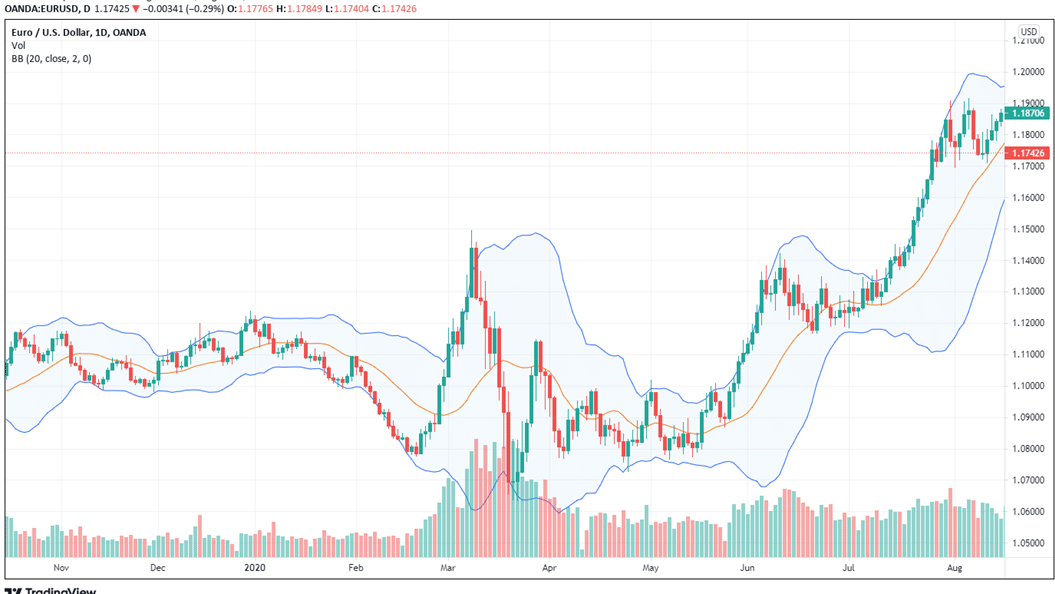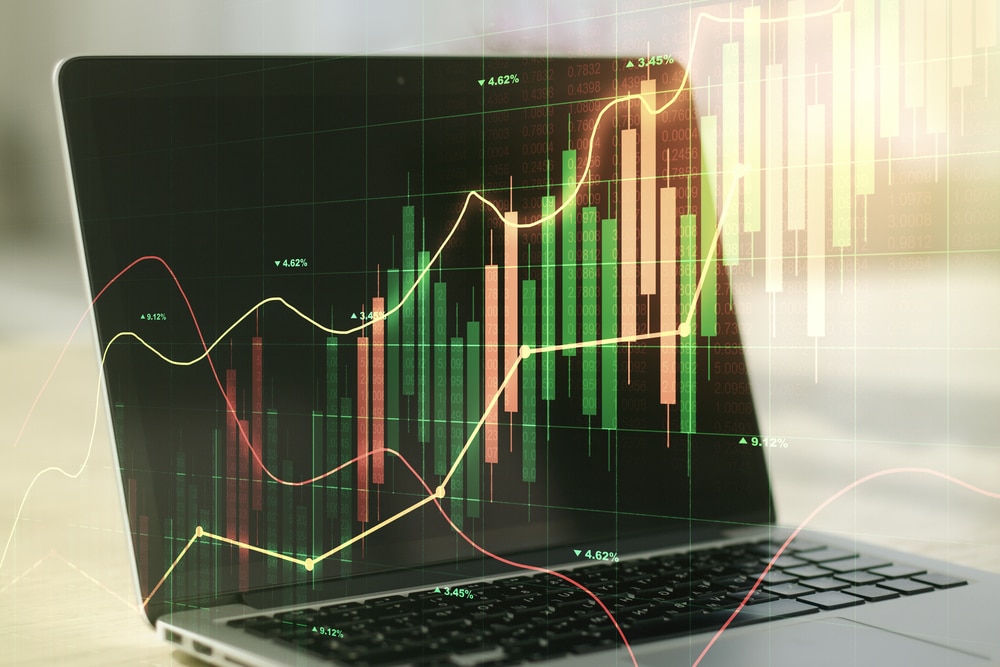Range trading is a method in which the trader attempts to identify if the asset has been overbought or oversold. Traders purchase and sell as the market swings either in favor of buyers or sellers. They do so depending on whether the market has breached established levels of support and resistance.
It’s best to implement the technique when there is no evident long-term trend and when the currency market lacks direction. Trading ranges can be tough when the market is steadily advancing.
Trading range = an area that exists when a market fluctuates within a specific price range for a certain amount of time (e.g., one day).
It is possible to effectively employ range trading on any time scale.
How to approach range trading
Look for an appropriate market
First and foremost, traders must find a market that is not trending. This can be accomplished by utilizing a Moving Average indicator with a timescale that is no longer than the trading period under consideration.
When the blue 20-day Moving Average depicted below flattens, we get a signal of a sideways market which is appropriate for range trading. An uptrend then follows thereafter.

An alternative technique to estimate the strength of a trend without taking into consideration its direction is the Average Directional Index (ADX). It employs a scale ranging from 1 to 100, with an index below 20 indicating a sideways market being evaluated.

The chart above reveals that the ADX has dropped below 20 as the market has flattened, as depicted by the red line in the lower graph.
Identify the scope of the range
Once you’ve established the range, the next is to find the extent of the range. In order to return to normal, the price must go through at least two periods of lower lows and higher highs before resuming the upward or downward trend.
Range regions on a candlestick chart can be recognized, though range bars on a price movement-based chart show traders a measure of market volatility. When the price of a commodity (e.g., a stock, commodity, currency, etc.) fluctuates within a certain range, a new bar is created each time. When the price is rapidly fluctuating, the market displays more candlesticks with long wicks to show the volatility.
A trading technique that makes use of range bars ensures that the price stays contained and fluctuates within a narrower range. Important turning points become more obvious, and the importance of resistance bands is highlighted.
Manage your risk exposure
After you’ve determined your trading range and created your entry strategy, don’t forget about the final step in any successful range trading endeavor. Even if you choose to trade one way or another, risk management is always important. However, when you opt to trade range, risk management is even more critical. In the event that a resistance or support level is breached, traders will understandably opt to exit a range-based position.
A stop loss in place might be beneficial when attempting to ensure that range trading is done in a low-risk manner. When selling the resistance zone of a range, it is common practice to place a stop loss above a prior high. When buying the support zone of a range, you can freely invert the procedure. Keep in mind that when you are trading range, you significantly increase your chances of success if you have implemented suitable risk management procedures.
Instead of embracing the risk-taking side of currency trading, range trading takes a more conservative approach, placing it closer to the middle ground.
The impact of range trading can be particularly significant when the forex market is unable to find a clear direction in which to move. It is possible to make a lot of money trading ranges if you know how to identify the range, when to enter, how to control your risk exposure, and how to comprehend the principles of range trading.
Range breakout
Range trading patterns are generally considered to be temporary, and the market will eventually break free of its confines. Forecasting how and when this will occur is challenging, but indicators can be helpful in this situation as well.
Bollinger bands can be helpful with timing the range breakout. The chart below shows how the indicator reacts to the price action.

When applied to price movement, Bollinger bands are typically two standard deviations above and below the price, which indicates how volatile the market is. As you can see in the chart above a narrowing width of the Bollinger band is commonly spotted shortly prior to the breakout of the price pattern.
Pros & cons of range trading
Pros
Many factors contribute to the popularity of range trading as a technique, including the following:
- Traders can profit from periodic intervals when the markets are not trending.
- Because range trading can be employed in any market, the user is not restricted to certain trading hours.
- Once the range is established, the trader will have clearly defined entry and exit points, which will make it simple to open a position and use stop losses.
- In this strategy, smaller profits tend to be obtained throughout shorter timeframes, reducing the possibility of abrupt shifts in price resulting from news from the financial markets.
Cons
You should also be aware of many dangers of range trading, including:
- It is difficult, even for experienced investors, to determine when a market is in a range and when it will break out of it.
- Range trading necessitates relatively frequent entries, increasing commission fees, and eroding earnings.
- Determining appropriate markets and product ranges can be time-consuming.
With the above in mind, it is highly recommended that traders test their range trading techniques utilizing a demo account with virtual funds prior to making any real money trading decisions.
In summary
In situations when there is no clear trend direction, range trading is a versatile method that may be utilized across the board. The identification of support and resistance extents for a range can be the most difficult component, but once these have been identified, the buying and selling points for the range become obvious. In order to gain experience in range trading and forecasting price movement, practice on demo accounts is vital.
